Unit 1
Methods of cataloguing
Collection:
Photographs of nest – Legacy from ornithologist William Brewster
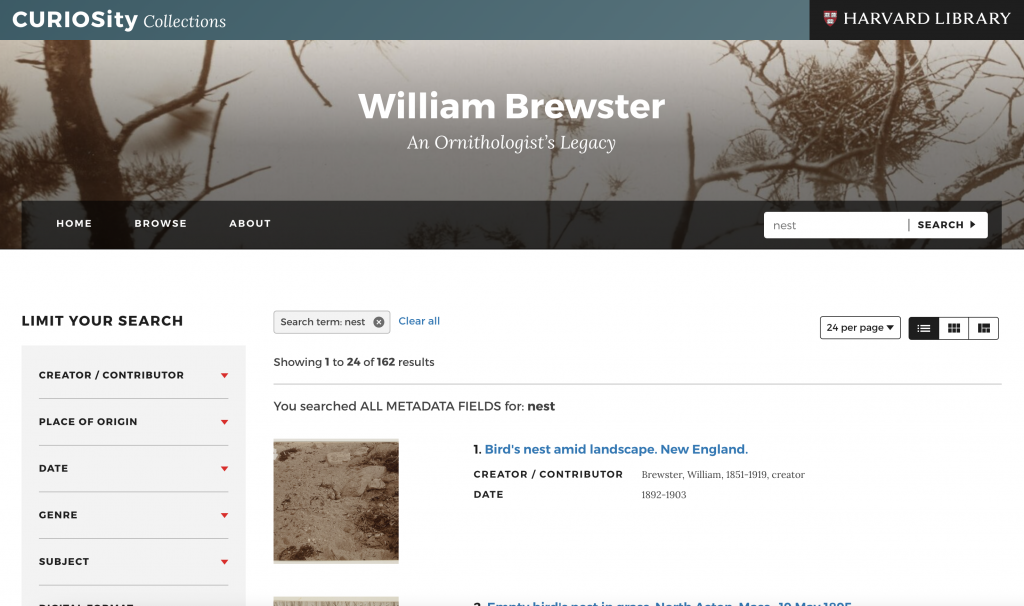
Week 01
1. Photographs of the Women’s Liberation Movement
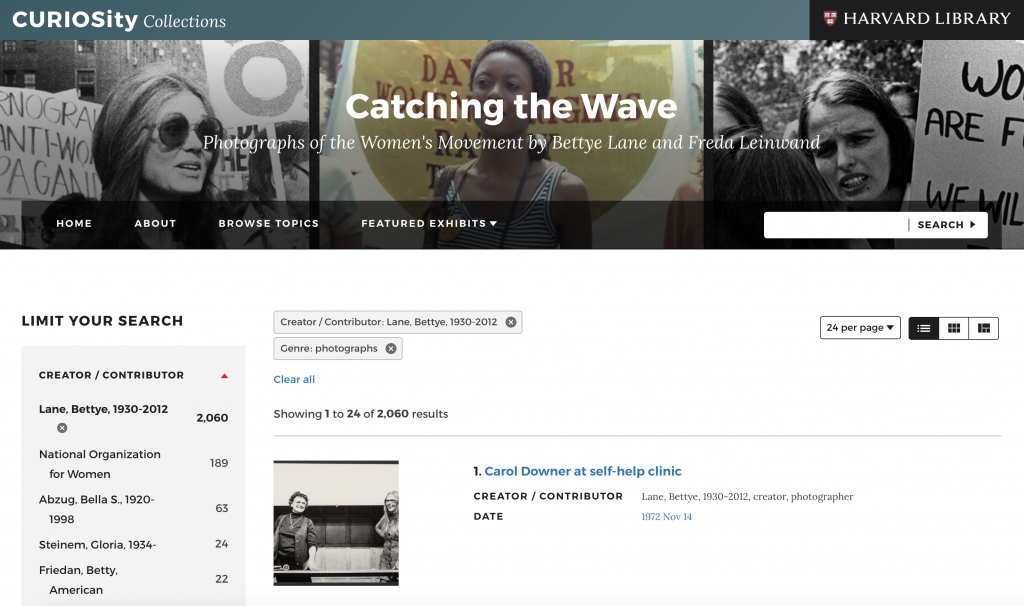
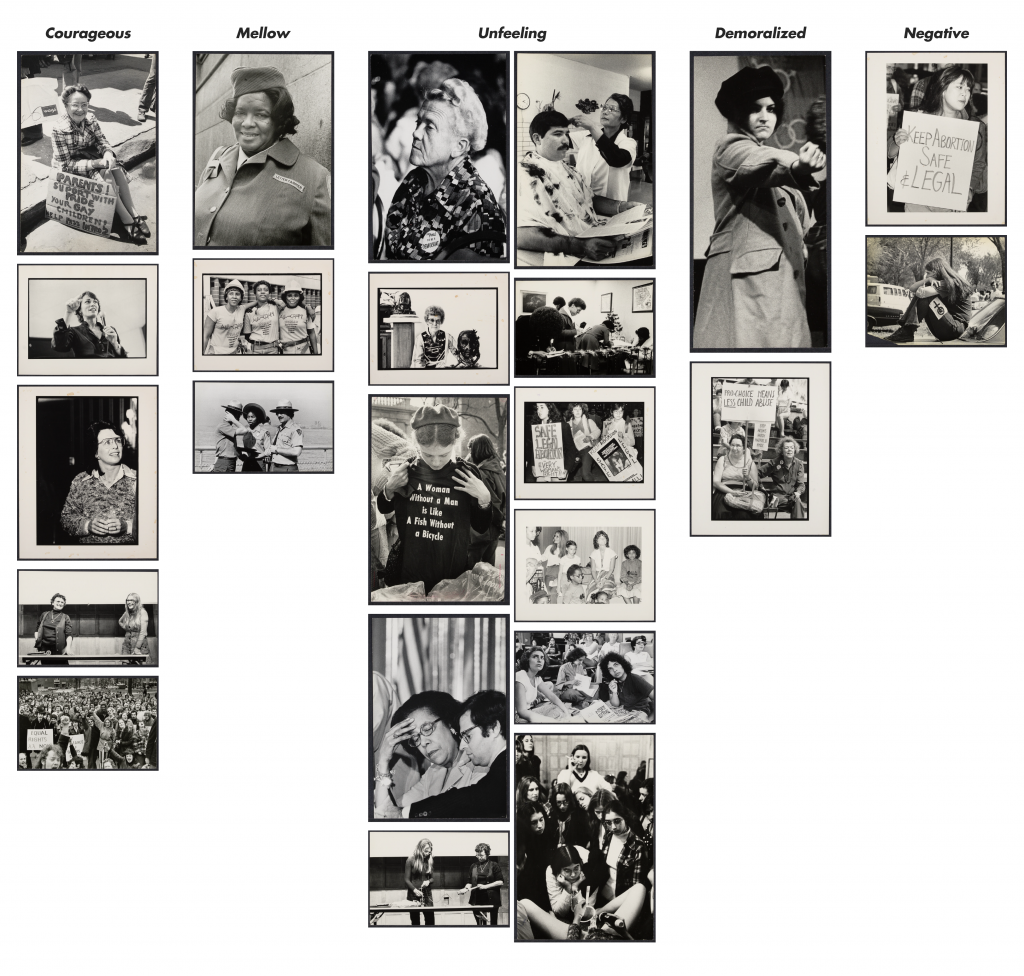
In the first stage, I chose 3 sets of photographs and catalogued them in one way each. The first set of photos depicts the women’s liberation movement in the late 1960s and 1970s. The photos are catalogued on the website by photographer, date, genre, material, etc.Because this set of photos is about the women’s movement, naturally, there are women in almost every photo. I found that women in the same movement would present different states.
There may be very positive women, and there may be depressed women. According to the emotions of the women in the photos, we can more or less see the ups and downs of this movement. There may be times when it’s difficult, times when it’s moving in a good direction, and times when it’s stagnant, but these things and women of all moods make up this movement. So l classified the facial expressions of women.
2. Portraits from Artemas Ward House
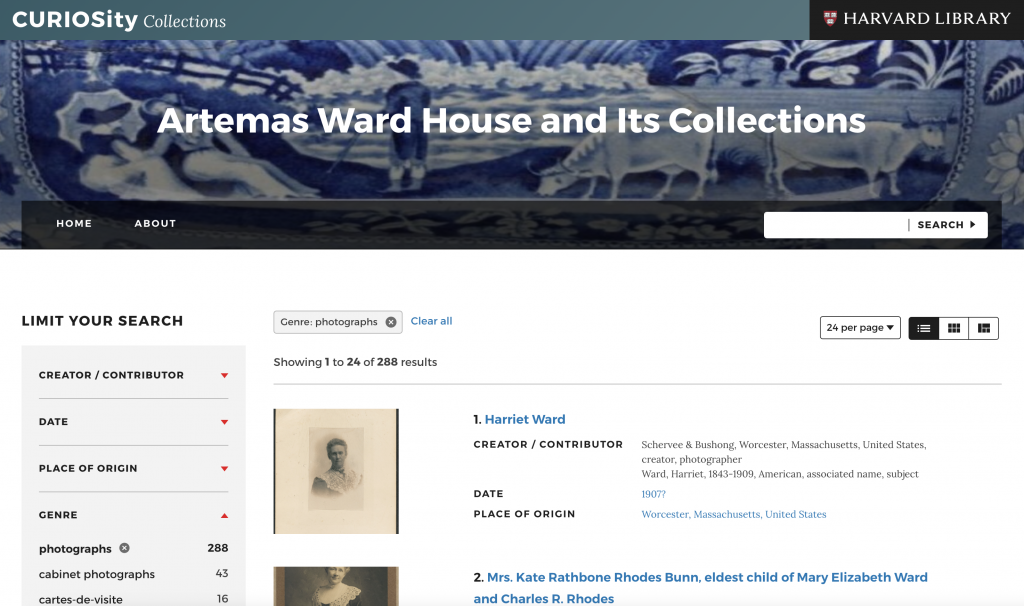

The second set is from Artemas Ward House and Its Collections. There are many portraits in this collection. Portraits require the subjects to interact with the camera, but I found that they always look in different directions.
So out of pure curiosity, l explored the direction of people’s eyes in the photos and intentionally kept their eyes in the same position on each page. The gazes of the people in the photos gradually shifted from the right to the left. We can see that most of these people are not looking directly at the camera. So a question arises. With the changes of the times, how has the communication between people and the camera changed?
3. Photographs of Nests from William Brewster’s Legacy
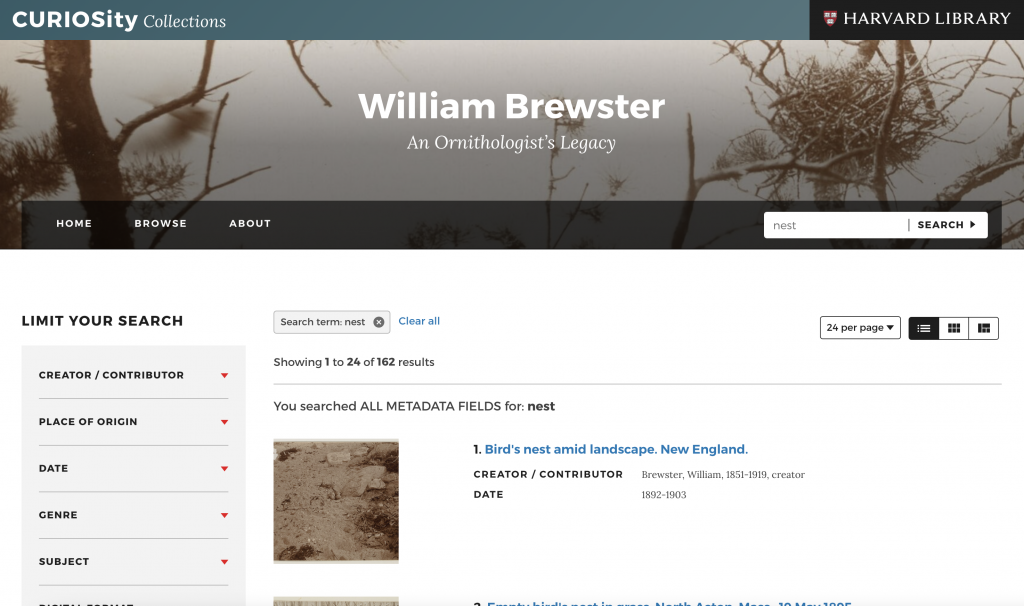
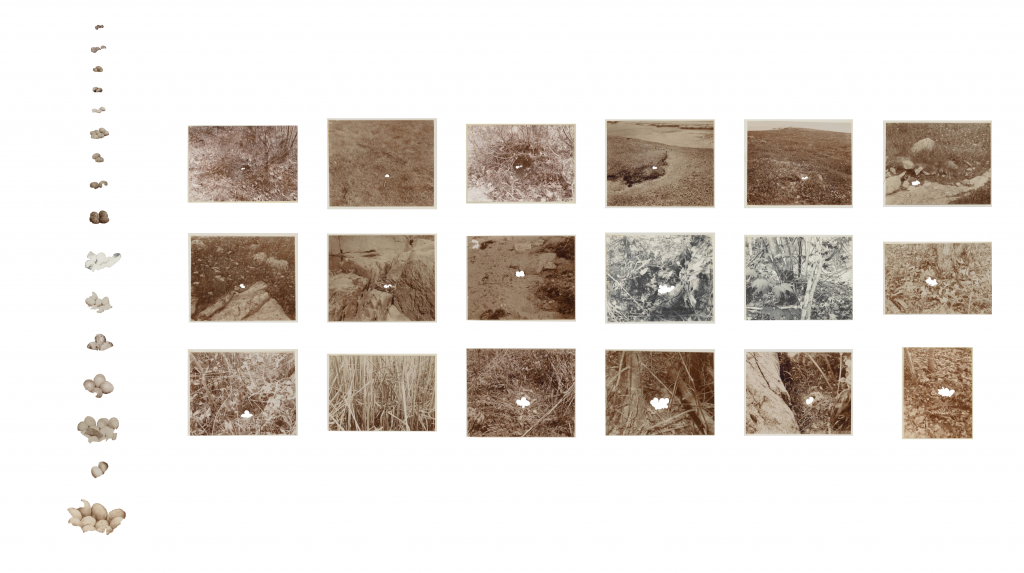
The third set of images is from the legacy of William Brewster, which is the collection I focus on. There are a lot of images here, and I was attracted by images related to bird nests when I was browsing. In this experiment, I sequenced the images according to the distance between the eggs in the nest and the camera. You can see that the eggs are getting closer and closer to you.
The eggs are not obvious in the bushes and grass, so l cut out the eggs. There are some accidental situations here: sometimes there are no eggs in the bird nest. As we get closer and closer to the eggs, they get bigger and bigger.
week 02
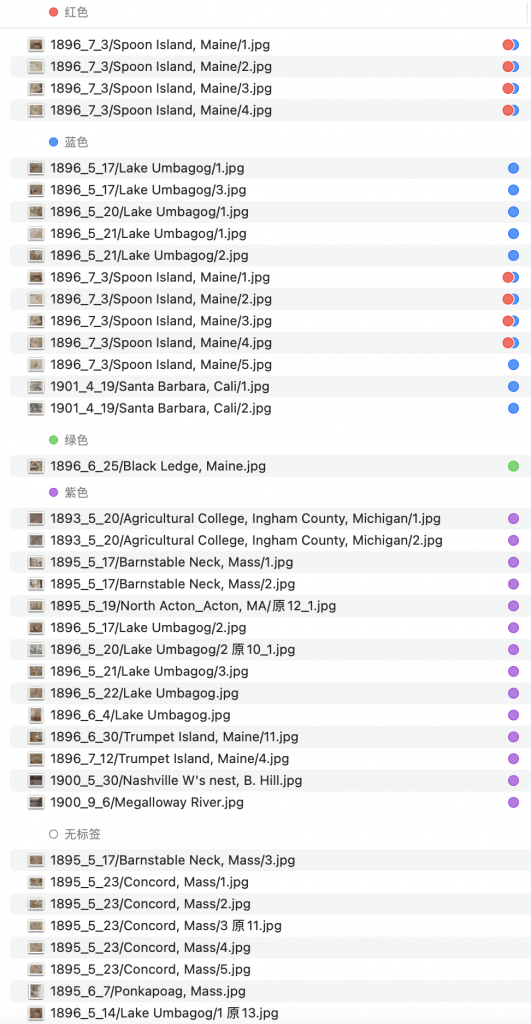
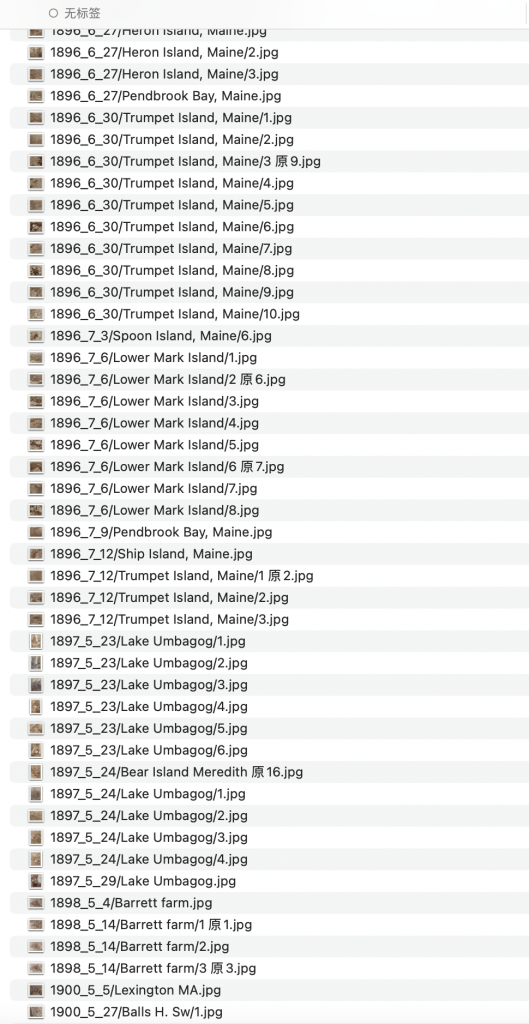
This week, I wanted to explore more about the distance. So I was considering what the distance on earth is and how the distance builds a relationship between me and old photographs. So I explored it from two aspects. One is about the time from the past to the present, and one is about the physical distance between the nest and the camera.
Website: Distance
I made a website to show the distance. I sequenced the eggs from near to far, and as I scrolled the screen, the eggs became smaller and farther away from me. You can see that there is a line here, which exists as a hint of distance, and it also appears in the time section. The solid line represents one month, the closer dash represents one year, and the sparser dash represents five years. It was not until 124 years later that I saw the first set of photographs. Although it may be due to Brewster’s subjective choice, I can see that bird nests appeared frequently in the earlier three months. Finally, we came to the time when the most distant and earliest bird nest appeared, which was May 1893.
Reflection
- Try to find other things I can plot on the scroll or put in those “time” and “camera” things together. Bringing those two different catalogues may better reveal the changing relationship between humans and nature, as well as the nature of this change.
- Try to do more investigations ,like combining or expanding or whatever, and see what happens.
More…
Cross-year Studio/XY.A
Leave a Reply